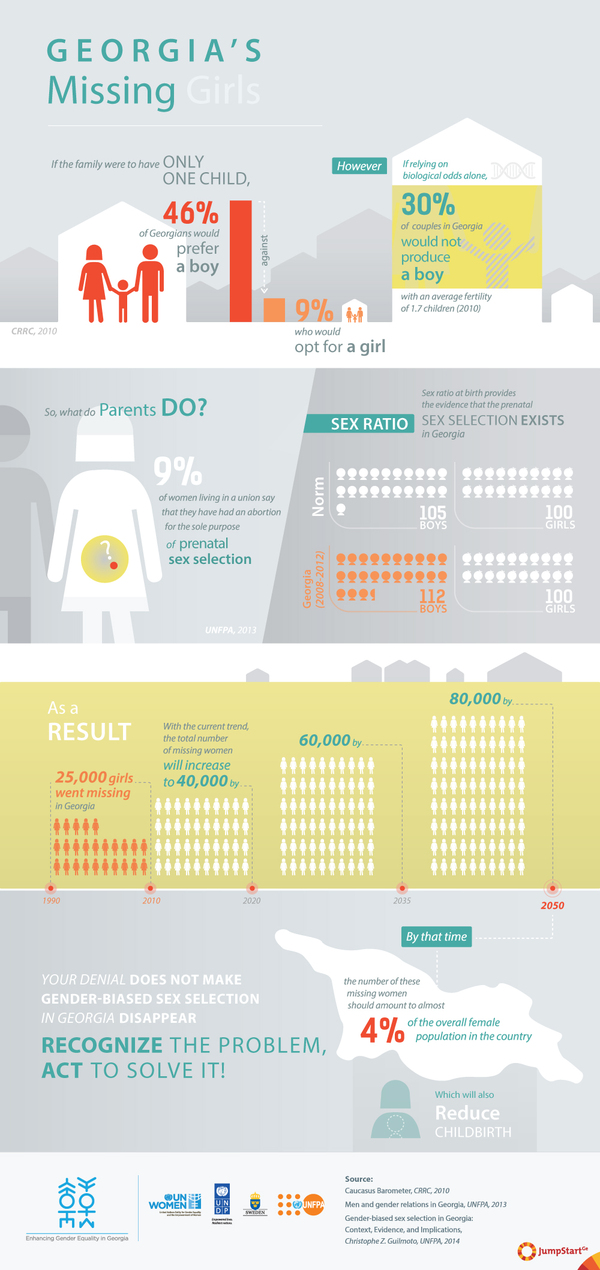Georgia’s Missing Girls
- ❤ 2 მოწონება
-
 7280 ნახვა
7280 ნახვა
If the family were to have only one child, 46% of Georgians would prefer a boy against 9% who would opt for a girl.
However, relying on biological odds alone, 30% of Georgian couples would not produce a boy with an average fertility of 1.7 children (2010).
Sex ratio at birth provides the evidence that the prenatal sex selection exists in Georgia. In 2008-2012 there were 112 boys born per 100 girls, while normally this number is 105.
As a result: 25 000 girls went missing in Georgia in 1990-2010.
With the current trend, the total number of missing women will increase to 40,000 by 2020, 60,000 by 2035 and 80,000 in 2050. By that time, the number of these missing women should amount to almost 4% of the overall female population in the country.
The infographic was created based on report “Gender-biased Sex Selection in Georgia” (2014) that is the first systematic study of Georgia and aims at providing an in-depth review of existing evidence on possible sex imbalances at birth.
The report was created by Christope Z. Guilmoto, with the support of United Nations Population Fund Georgia country office (UNFPA) within the frameworks of the UN Joint Programme To Enhance Gender Equality in Georgia.
The aforementioned program is implemented with the mutual cooperation of three UN agencies– United Nations Population Fund (UNFPA), United Nations Development Program (UNDP), and UN Women (UN Women) with the financial assistance of the Swedish Government.
- ორგანიზაცია: JumpStart Georgia
- ჟურნალისტი: Nino Macharashvili (JumpStart Georgia)
- დიზაინერი: Ia Ninoshvili (JumpStart Georgia)
- მონაცემთა წყარო:
- ენა: English, ქართული
- კატეგორია: Society, Health / Public Safety, Gender
- ტიპი: ინფოგრაფიკა





